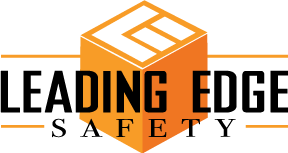Frequent readers of roofing blogs and other publications may recognize a compelling and frequently quoted argument for preventive maintenance made in Buildings.com and Roofing Contractor: According to the Buildings.com story, building owners and facility managers who inspected and repaired their roofs routinely were able to identify potential problems before they happened. As a result, they spent an average of only 14¢ per square foot annually for maintenance. On the other hand, owners and managers who reacted to problems spent an average of 25¢ per square foot annually. On top of that, proactively maintained roofs lasted an average of 8 years longer than reactively maintained roofs.
The reporting is nearly ten years old, so instead of relying solely on potentially rusty data, let’s look at the conditions underlying those results and see if it still makes more sense to implement a proactive maintenance program than gamble with a reactive one.
Spoiler alert: It does.
First, let’s define our terms.
By reactive maintenance, we mean unscheduled work performed upon discovery of critical defects that may present an immediate threat of water intrusion into the building interior.
Proactive maintenance involves managing the roof as you would manage an asset like a computer network or a machine shop — with periodic inspections and scheduled repairs.
The goal of a proactive maintenance program is to anticipate problems that might prevent the roofing system from doing its job. In other words, you want to avoid “downtime.” Downtime can include disruptions in building use, lost use of space, or tenant complaints — all of which can result in lost revenue. Tenant complaints can also lead to incremental expenses such as lawsuits.
Even the slightest delay in roof repairs can expose the building to costly slip and fall incidents and mold and mildew problems. Once a roof has fallen into disrepair, the owner becomes exposed to expenses caused by excessive labor costs, destroyed inventory, higher energy costs, higher insurance premiums and damaged interiors. In addition, emergency repairs can cost anywhere from three to nine times as much as scheduled preventive repairs.
Proactively Protect the Warranty
As discussed in an earlier post, standard “No Dollar Limit” warranties require maintenance. The EverGuard® Diamond Pledge NDL Roof Guarantee, for instance, states, “You must perform regular inspections and maintenance and keep records of this work.” GAF Certified Maintenance Professionals (CMPs) can offer the GAF WellRoof® Guarantee Extension, which encourages regular maintenance and extends the length of eligible GAF Diamond Pledge
NDL Roof Guarantee, for instance, states, “You must perform regular inspections and maintenance and keep records of this work.” GAF Certified Maintenance Professionals (CMPs) can offer the GAF WellRoof® Guarantee Extension, which encourages regular maintenance and extends the length of eligible GAF Diamond Pledge guarantees by up to 25% — with no additional guarantee fee.*
guarantees by up to 25% — with no additional guarantee fee.*
If you’re a building owner, implementing a proactive maintenance program is as logical as scheduling an engine oil change — the cost of not doing it is simply too high to ignore.
And if you’re a contractor who finds yourself fixing leaks on an emergency basis, it’s probably time talk to your clients about the value of proactive inspections.
For more on roof maintenance and the GAF Certified Maintenance Professional (CMP) program, check out:
Three Myths about Roof Maintenance
Generating Revenue with Commercial Roof Maintenance
Make a Roof Last with Maintenance
*See applicable guarantee for complete coverage and restrictions.
The post Proactive vs Reactive Maintenance appeared first on GAF Blog.

